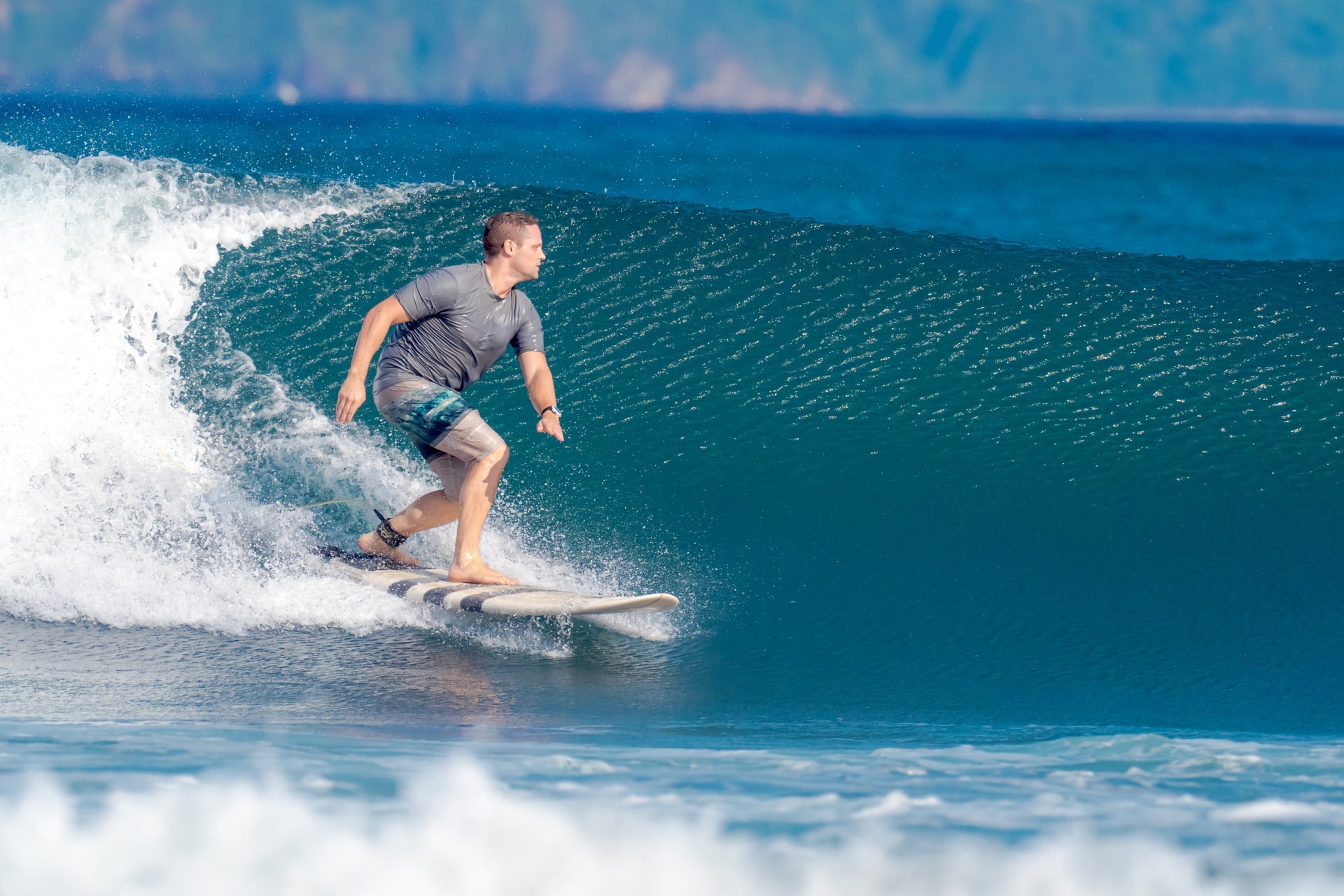Have you ever wondered who has the biggest advantage when surfing? Is it better to be short or tall when learning to surf?
Tall surfers often find it harder to learn how to surf because their center of gravity is not as low as those who are shorter.
Although shorter surfers do have an advantage, there is no reason why taller people cannot surf.
Below we will discuss why taller people find surfing harder, the ideal equipment for taller people, and some tips that could help you as a tall person out when learning to surf.
- Is It Better to Be Tall or Short for Surfing?
- Is It Easier or Harder for Tall People to Learn to Surf?
- Does Body Height Matter in Surfing?
- What Are the Advantages of Being a Tall Surfer?
- Do Tall Surfers Need Different Equipment?
- 11 Practical Tips for Tall Surfers
- Conclusion
- You Might Also Like…
Disclosure: this post contains affiliate links (clearly marked with ), which means we may earn a commission if you buy something through them, at no additional cost to you.
Is It Better to Be Tall or Short for Surfing?
Of the eight best male surfers in the world, only two of them reach the 6-foot mark:
| 2021 Championship Ranking* | Surfers Name | Place Of Birth | Height (in feet) |
|---|---|---|---|
| 1 | John John Florence | Hawaii | 6 |
| 2 | Gabriel Medina | Brazil | 5’9 |
| 3 | Italo Ferreira | Brazil | 5’5 |
| 3 | Kelly Slater | USA | 5’7 |
| 5 | Jordy Smith | South Africa | 6’1 |
| 5 | Kanoa Igarashi | Japan | 5’8 |
| 5 | Jeremy Flores | France | 5’7 |
| 5 | Leonardo Fioravanti | Italy | 5’9 |
Taking a look at the average height of these surfers, we come to a height of 5 feet and 8 inches (appropriately 1.7 meters).
If for the sake of keeping a constant, we consider anyone 6 foot or above tall, it is easy to assume from the above data that shorter surfers tend to outperform taller ones.
Of course, these statistics are only relevant when it comes to the best of the best.
Height does not matter as much when you are a casual surfer, although shorter people tend to find the learning curve slightly gentler.
Through observation and some logical thinking, it can be concluded that it is better to be a short surfer than a tall one.
Is It Easier or Harder for Tall People to Learn to Surf?
As mentioned above, it is often harder for taller people to learn to surf than it is for shorter people.
The reason for this comes down to three main things: Center of gravity, getting your legs into the correct position, and surfboard size.
Center of Gravity
As someone who has experienced, or is busy experiencing the learning curve of how to stand up on a surfboard, you will know that balance is everything.
The best way to increase your balance is by finding a strong center of gravity.
One of the ways in which surfers do this is by bending their legs into a crouching position.
As your body weight gets closer to your surfboard, your center of gravity increases.
The easiest way to understand this is by considering how much easier it is for the wind to blow over a 10 story building as opposed to a 1 story building.
When a person is shorter, their natural center of gravity is closer to the board, and therefore they have better balance.
As your body height increases, so does the effort required to balance.
Getting Your Legs Into the Correct Position
As a taller surfer, when trying to pop up, you may find it difficult to get your legs under your body.
As your legs are longer, there is more to pull up, but the time you have to do this does not increase.
Although this can make it more difficult to stand up, your long legs likely come with long arms, which will increase the amount of space between your body and your surfboard.
This can help make the popping-up action slightly easier.
Size of Your Surfboard
When learning to surf, it is always recommended to start with a larger board.
The size of this board, however, will differ when you are taller. As a taller person, you will naturally need a longer board.
Although this seems logical, the larger the surfboard becomes, the more difficult it is to control in the water.
Therefore, shorter people can surf on smaller boards, which allows them greater control in the water, and in most cases, more speed due to the smaller area of friction between the surfboard and the surface of the water.
Does Body Height Matter in Surfing?
If it is easier to be short when surfing, does that mean that your height makes that much of a difference?
How much does it matter if you are tall and want to learn to surf?
Although shorter people may find surfing easier, that is not to say that taller people will find surfing hard.
Remember, that you have lived with your tall body your entire life. You know how it works.
Just because the average surfer is shorter does not mean that you will find being tall a huge setback.
To prove this, Andy Carter, a 6’9 giant rips up waves as though he was a foot shorter.
The only disadvantage Andy finds while surfing is that when everyone else is talking about an “overhead wave” he usually needs to stay crouching.
What Are the Advantages of Being a Tall Surfer?
It seems as though short people have all the advantages when it comes to surfing.
This statement is almost true, but not entirely. There are a couple of advantages that tall surfers have in the water.
Although there are not many, these advantages can make a big difference in the right situations.
Seeing Over the Waves
One of the biggest advantages that a tall surfer has is exactly the same as their advantage on land: They can see over taller things.
How does this help?
When sitting in the backline, waiting for the next set, being taller will allow you to see the on-coming waves before others.
With this advantage, you will know where it is you will need to paddle for the best position.
Being the first to act often results in you reaching the prime location first, and therefore catching the wave.
Extra Paddle Power
If you were in a boat, the bigger your paddle was, the more water you would be able to move, and therefore, the faster you would be able to move forward.
Taller people generally have longer arms and bigger hands, which means more surface area when paddling. More surface area means more propulsion.
Therefore, being taller may help you paddle faster than those with shorter arms.
Do Tall Surfers Need Different Equipment?
All surfers need the same equipment when surfing, no matter their body type.
The only difference is with the size.
Choosing the correct wetsuit and surfboard will depend on your height and body shape.
Although choosing a wetsuit that works best for you simply comes down to trying it on, and finding a nice tight and comfortable fit, choosing the correct surfboard is slightly harder.
The table below can act as a guideline when deciding what size board is best for you.
Keep in mind that choosing the correct surfboard has more to do with body mass than it does with height.
However, it is a good idea to choose a surfboard 2 – 5 inches taller than your body height when choosing a shortboard.
As for longboards, your weight is the key indicator as to how large your surfboard should be.
Although these are specific sizes, each person is different, and it is always best to find what works best for you.
Shortboard
| Beginner | Intermediate | ||
|---|---|---|---|
| Weight | Board Size | Weight | Board Size |
| 45 – 63 kg | 6’2” – 6’4” | 45 – 63 kg | 6’0” – 6’4” |
| 63 – 72 kg | 6’4” – 6’8” | 63 – 72 kg | 6’2” – 6’6” |
| 72 – 81 kg | 6’6” – 6’10” | 72 – 81 kg | 6’4” – 6’8” |
| 81 – 90 kg | 6’10 – 7’4” | 81 – 90 kg | 6’8” – 7’2” |
| 90 kg + | 7’4” + | 90 kg + | 7’2” + |
Longboard
| Beginner | Intermediate | ||
|---|---|---|---|
| Weight | Board Size | Weight | Board Size |
| 45 – 63 kg | 9’2” – 9’4” | 45 – 63 kg | 9’0” – 9’2” |
| 63 – 72 kg | 9’4” – 9’6” | 63 – 72 kg | 9’0” – 9’2” |
| 72 – 81 kg | 9’6” – 9’8” | 72 – 81 kg | 9’4” – 9’6” |
| 81 – 90 kg | 9’8” – 10’ | 81 – 90 kg | 9’4 – 9’6” |
| 90 kg + | 10’ + | 90 kg + | 10’ + |
11 Practical Tips for Tall Surfers
Although there is nothing you can do about your extra height, the following tips may help you remove the disadvantage of being taller while surfing.
Out of the Water
1. Practice burpees to get your body used to moving from a prone position to a standing position with speed.
2. Spend time in the crouched position that you use while surfing. This will increase the strength of your legs which will allow you to maintain a lower center of gravity.
3. Spend time on a skateboard or longboard, as both of these are similar to balancing on a surfboard.
4. Include yoga in your daily routine. Yoga is fantastic for balance. Although it may not seem like it, improving your flexibility and balance will make a huge difference in the water.
5. Choose a slightly longer board. Do not listen to others when they say the better you are at surfing, the sorter your board is. Choose a board that works for you and your body type.
In the Water
6. Paddle harder and stand up sooner. This is tricky as timing is important while surfing, but a split second of extra time can make or break your pop-up.
7. Dig your arms deep in the water when paddling.
You have long arms and you should use them to your advantage.
Make use of your larger paddles. This will allow you to use less energy when moving past the break and paddling into waves.
8. Use your height to your advantage and paddle to the idea location first.
Finding the position where the wave breaks and your height work together is easier when you can see it coming before everyone else.
9. Keep low when standing and maintain a low center of gravity.
10. Under-correct. When you feel like you are falling and need to correct your balance, do so in small amounts.
As you are taller, you have more weight higher up, and therefore, smaller movements make a bigger impact.
11. Don’t get disheartened if you are struggling to stand up. Even short surfers struggle at first.
Conclusion
Some claim that the ideal height for a surfer is 5’9”. It is easy to see how this is many’s thoughts as the average professional surfer comes in at approximately this height.
Tall surfers tend to be at a slight disadvantage as their center of gravity is not as low as those who are shorter.
Although this may be true, it does not stop taller people from getting on a board and ripping up the waves just like everybody else.
If you are tall and struggling to surf, do not give up. Everything new takes some time.
You Might Also Like…
-

Do Surfers Ride Switchfoot? 5 Benefits (& Why You Should Learn It)
-

Do Surfers Shave Their Legs? 5 Common Reasons (+Pros & Cons)
-

Do Surfers Wear Helmets? 8 Situations You Should Wear One (+4 Cons)
-

Do Surfers Poop in the Ocean? Myths & Facts (+5 Tips)
-
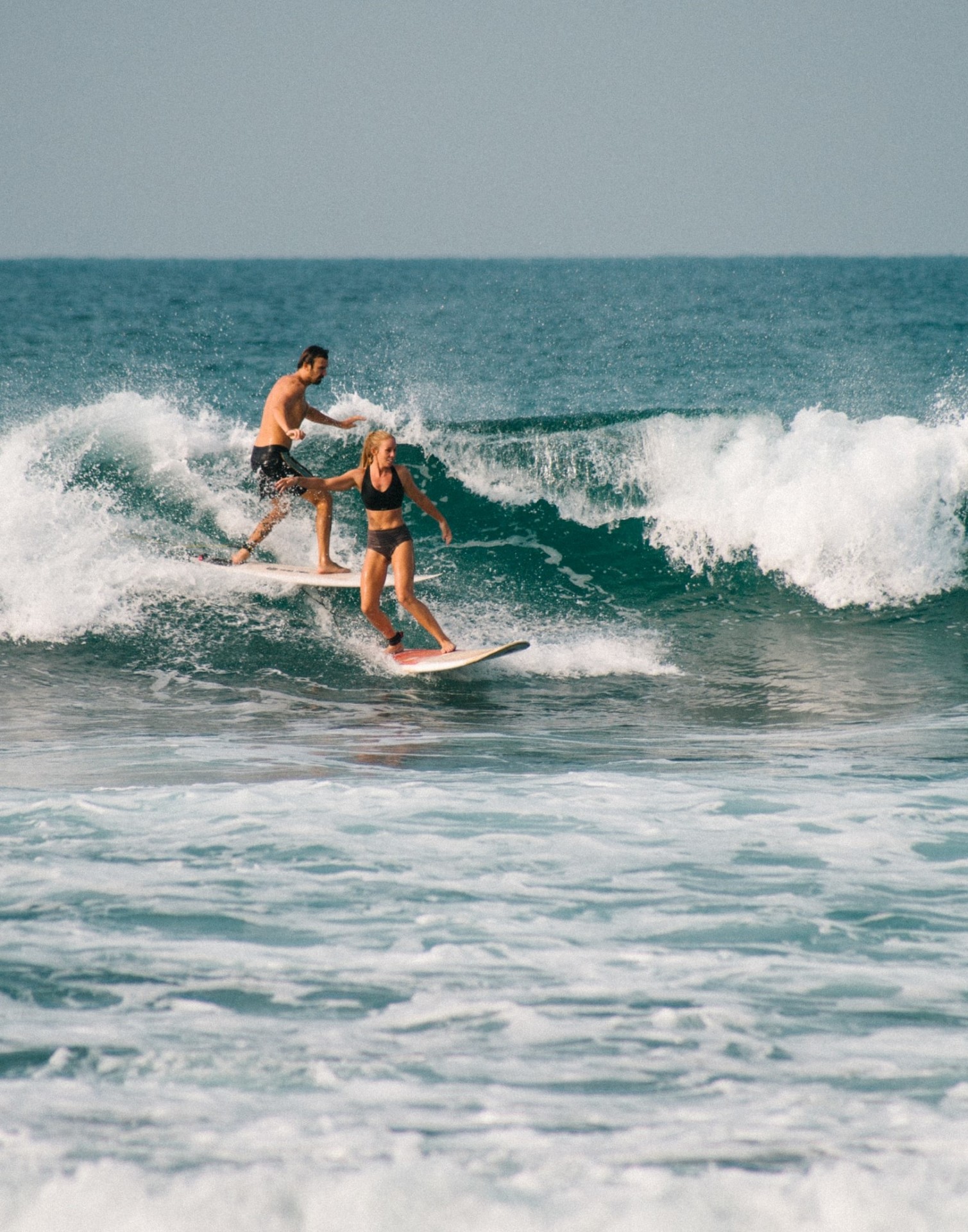
Do Surfers Run Into Each Other? 5 Common Reasons (+8 Tips)
-
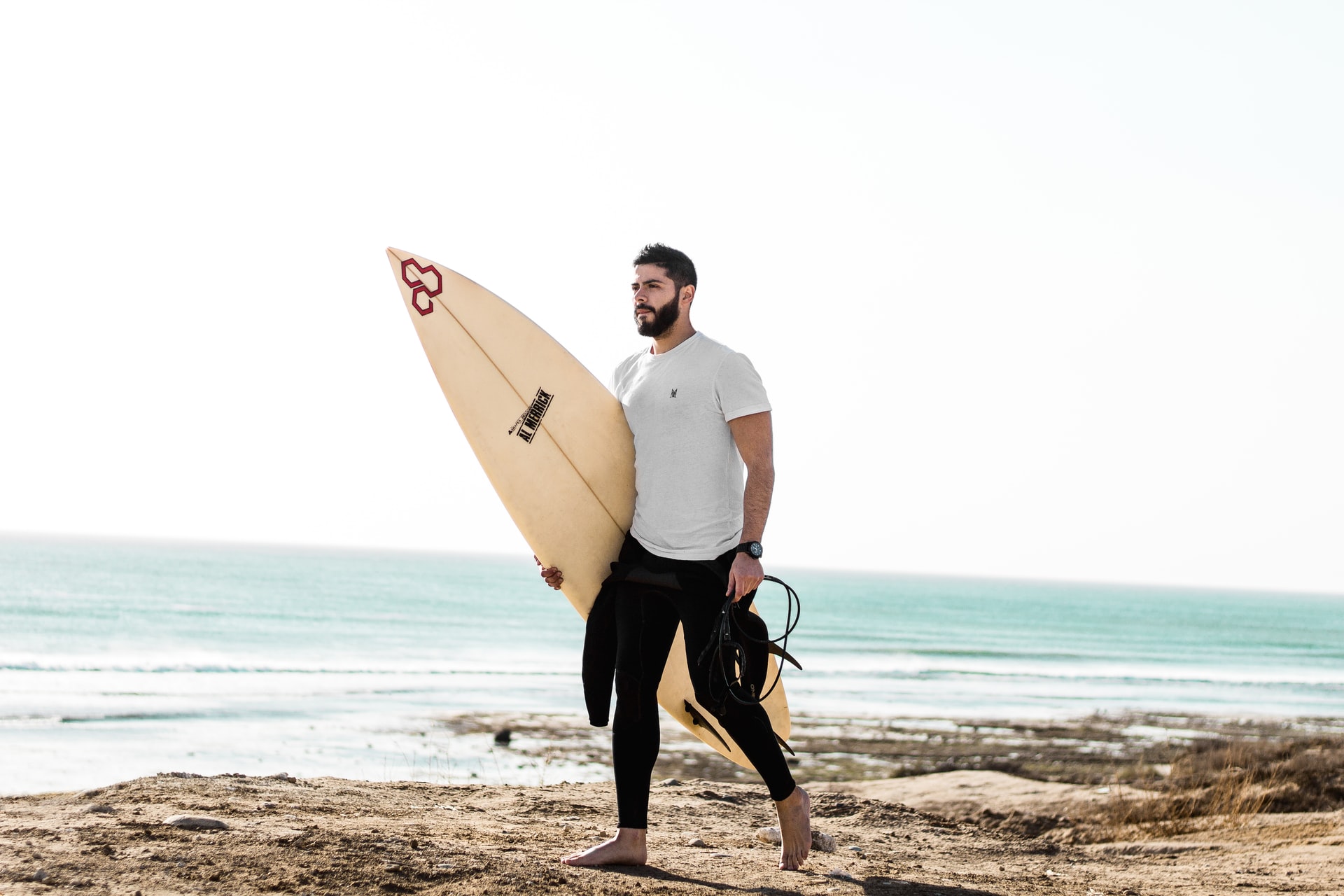
Do Surfers Have Beards? Pros & Cons You Should Know (+4 Tips)
-
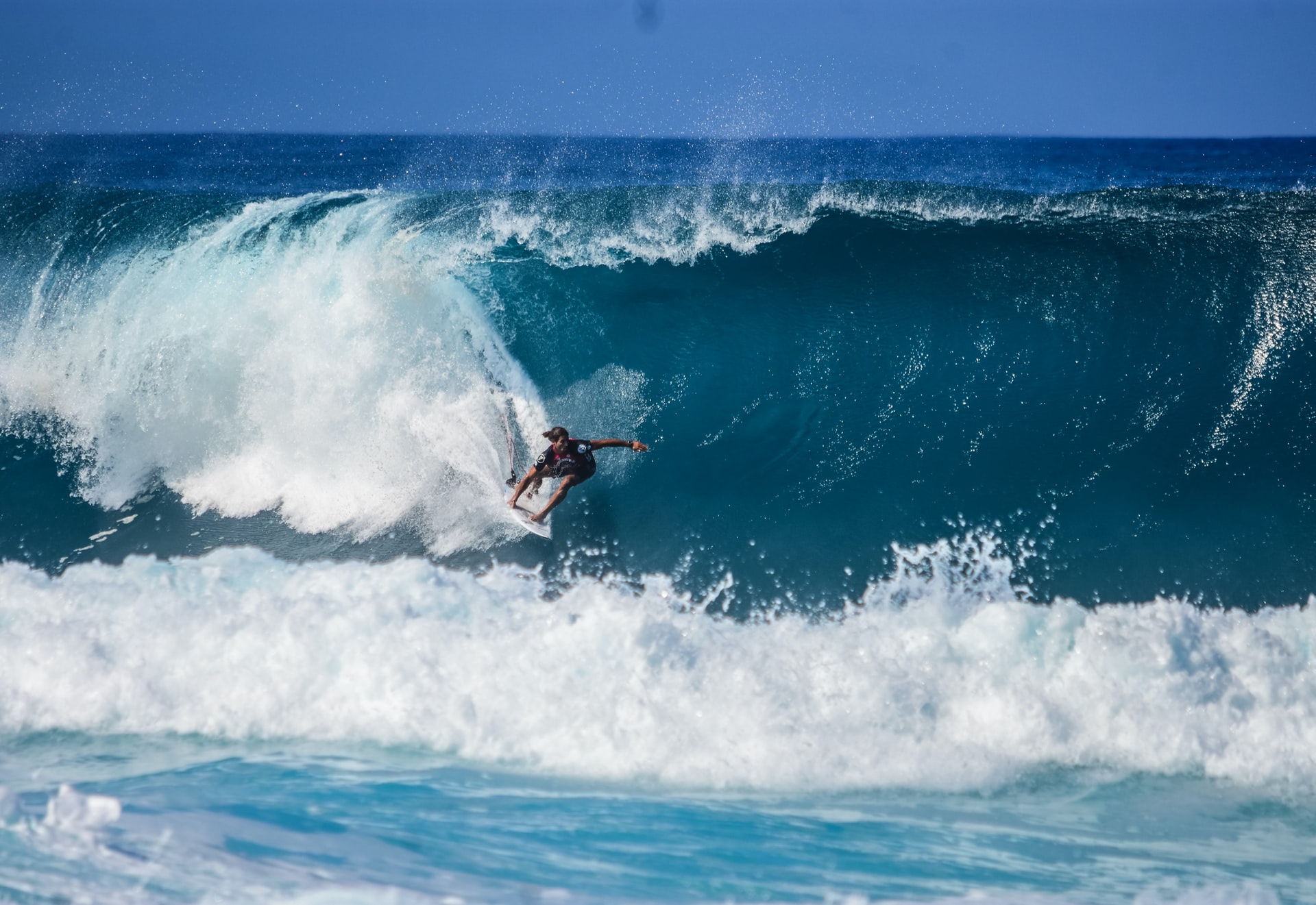
Do Surfers Like Constructive or Destructive Waves? (+Pros & Cons)
-
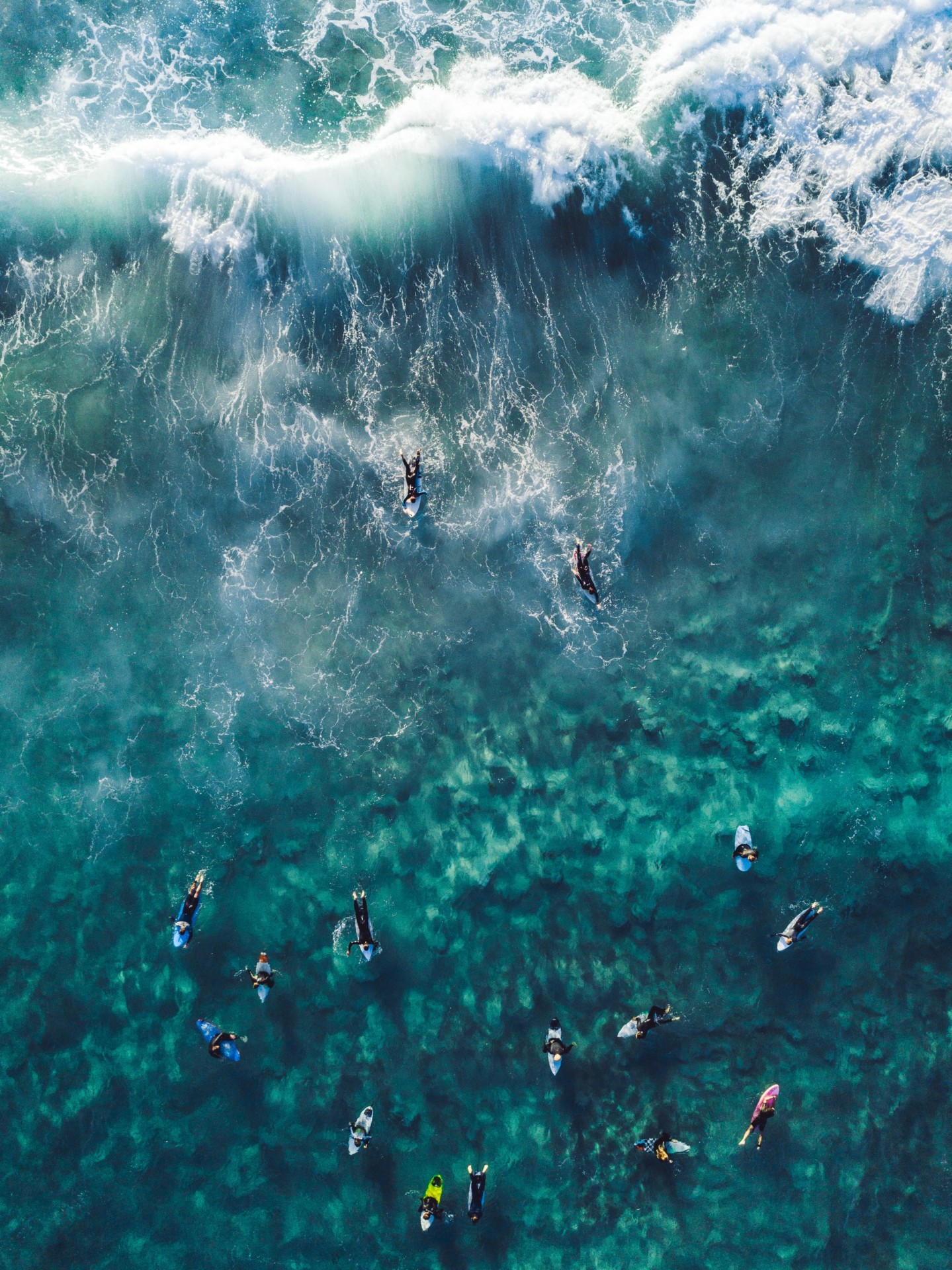
How to Surf Safely: 34 Crucial Tips (Every Surfer Should Know)
-
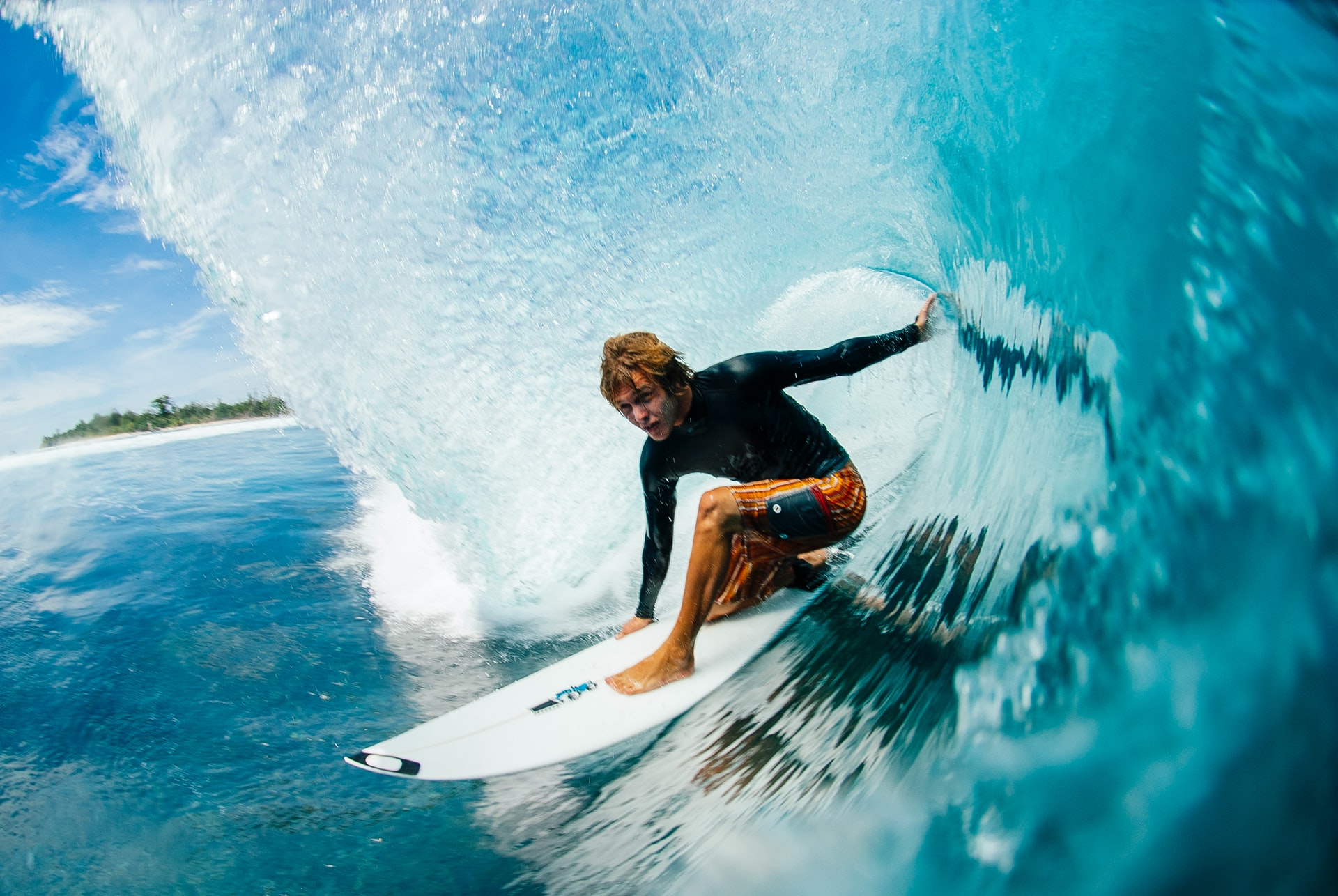
Do Pro Surfers Use Leashes? (+6 Reasons Why You Should Too)
-
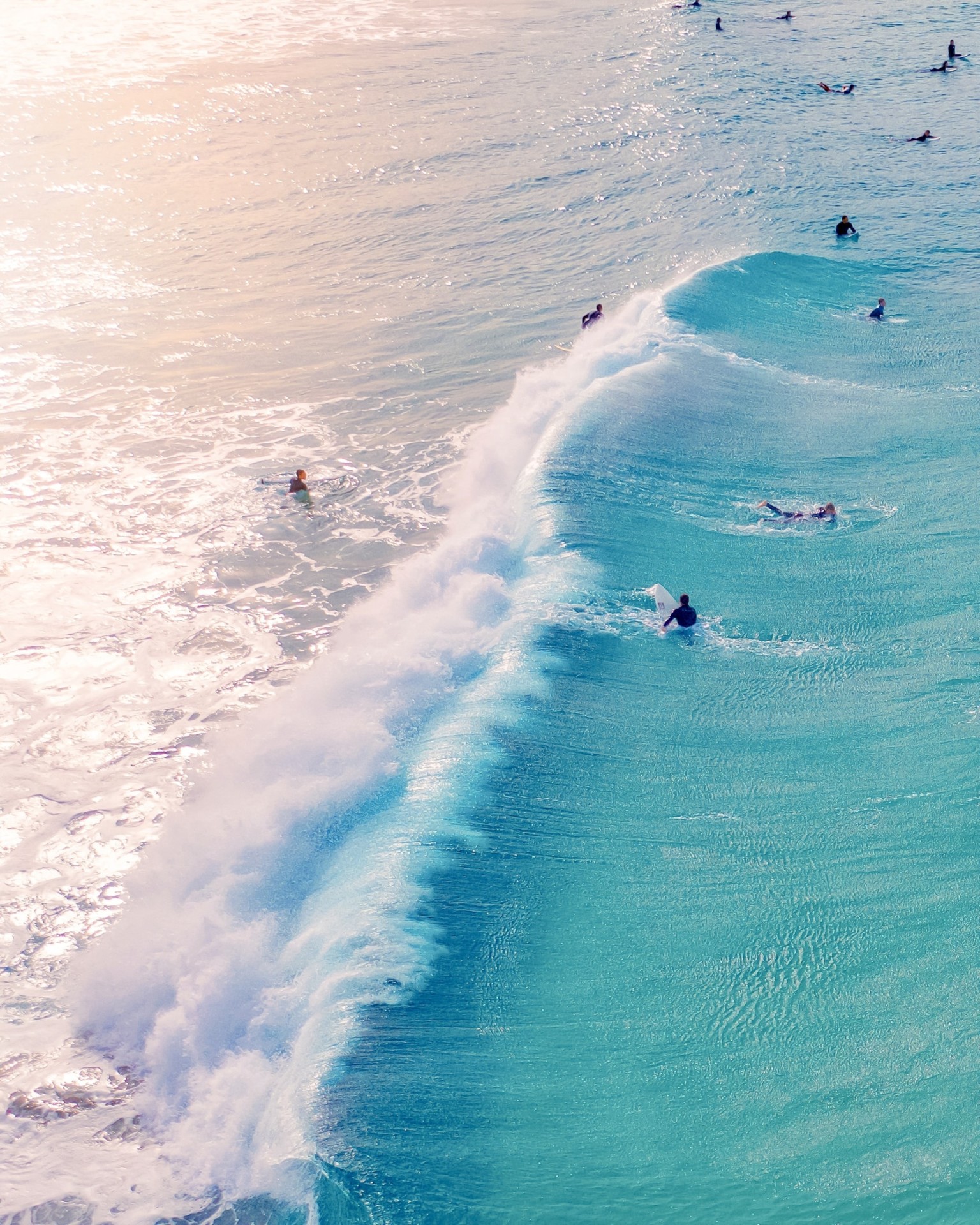
Do Many Surfers Drown? Here Are the Facts (+4 Common Reasons)
-
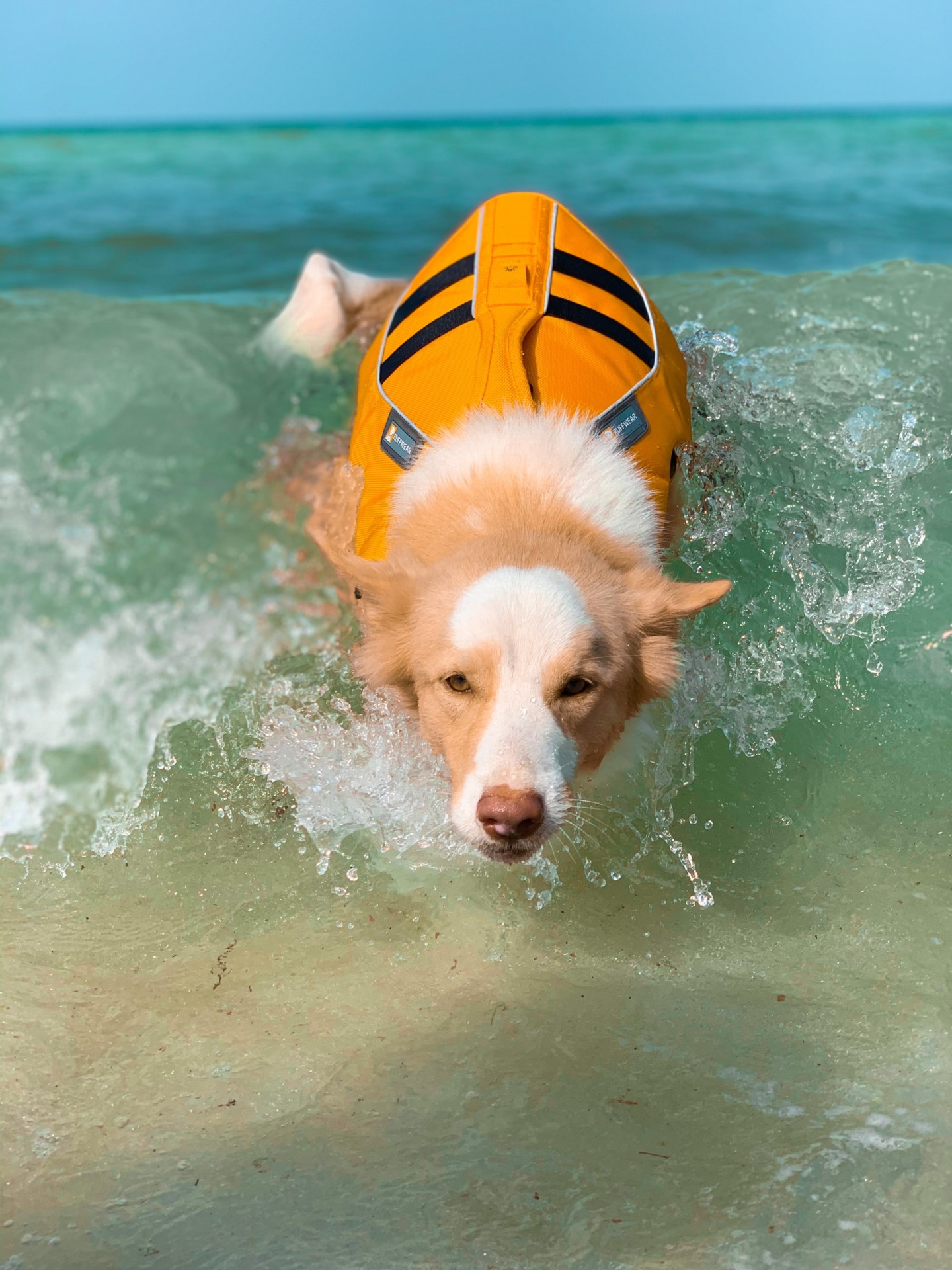
Do Surfers Wear Life Jackets? (7 Reasons Why They Don’t)
-
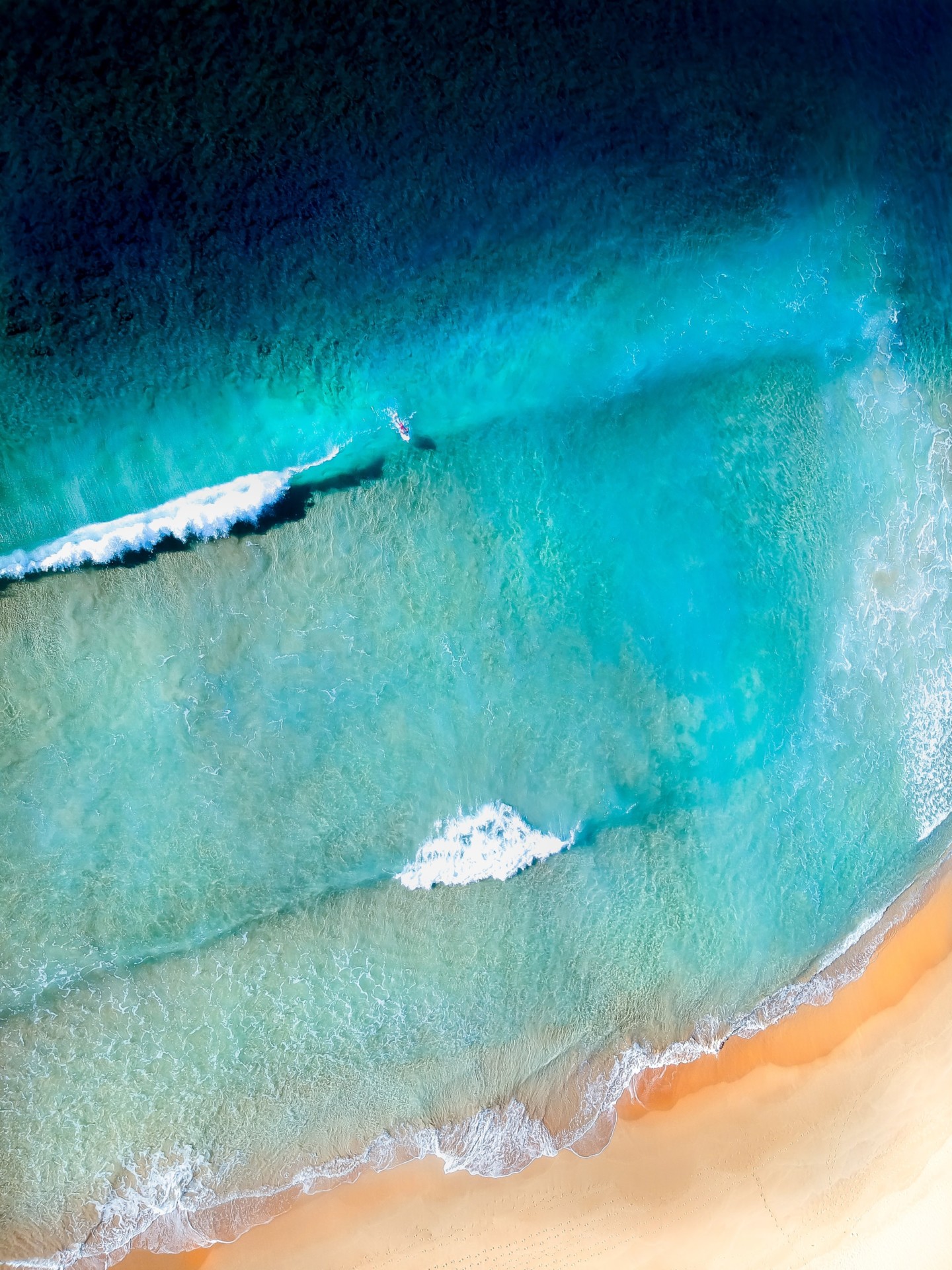
Do Surfers Like Rip Currents? (& How to Use Them Safely)

